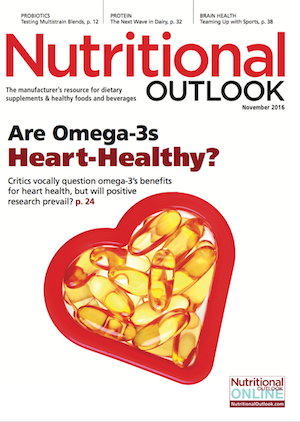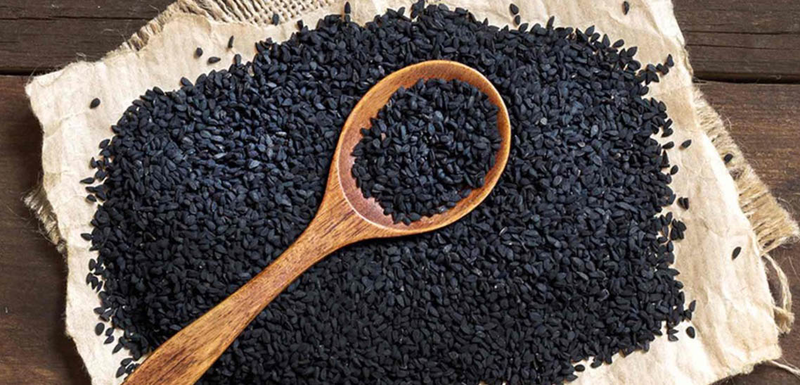New DNA Test Method Lets Probiotic Firms Test Multistrain Blends: SupplySide West Report
The scientists at probiotic supplier Dupont Nutrition & Health (Wilmington, DE) say they have developed testing methodology that makes it easier to identify the bacterial strains in a multi-strain blend.
Photo © iStockphoto.com/royaltystockphoto

Probiotic supplements often contain more than just one probiotic strain; most products today tout a blend of multiple beneficial strains. When it comes to verifying strain identity, most companies can and do have the ability to test individual bacterial strains before they are blended together in a finished product. But once those strains are mixed, testing becomes a lot more difficult. The scientists at probiotic supplier Dupont Nutrition & Health (Wilmington, DE) say they have developed testing methodology that makes it easier to identify the bacterial strains in a multi-strain blend.
According to Buffy Stahl, R&D Leader at Dupont, whom Nutritional Outlook interviewed at SupplySide West, current methods that can test multi-strain blends are prohibitively expensive and time-consuming. For that reason, Stahl claimed, “It is not done, in fact. Once you’ve blended probiotics together-let’s say you blend four different strains together-current methodology does not allow you to test those four different components without quite a long time to release process. It is a very expensive, time-consuming process, and so there really is nobody in industry that’s testing the species after they’ve blended them together.”
In March of this year, a study1 led by an FDA microbiologist and published in the journal mSphere acknowledged the challenges the probiotics industry faces in testing multi-strain blends. “The methods currently used to identify microbes within dietary supplements are laborious and do not provide immediate identification to the species level when dealing with a mixed microbial community,” the researchers wrote. Instead, most of the testing done in industry today is “classic” microbiology and is performed on unblended strains, Stahl said.
In theory, if one were to use traditional microbiology to test a strain mixture, “you would blend all of those species and strains together, and then you would try to plate them out and pick single colonies and then test them individually,” she said.
Realistically, however, the microbiology approach is unwieldy when dealing with multiple strains. “If you have a formulation that contains millions, billions, of bacteria, and they have relative abundances that are different-meaning you might have one strain that’s present in an amount that’s a thousand times more than another strain-imagine how many different colonies you would have to pick in order to get the right results?” Stahl said. “So it’s very difficult to resolve using classic microbiology in that way, which is why I think there hasn’t been very good compliance on testing of blends.”
Firms instead direct their efforts to testing probiotic strains before they are blended. But not testing a finished product leaves room for gaps in quality and safety.
“People tend to test before they blend things together, which is perfectly acceptable,” Stahl said. Without “post-blending analysis,” however, “you can no longer check that you didn’t have cross-contamination, that what you added in your process didn’t influence [what’s in the final product], or whether you forgot to put an ingredient in,” she pointed out. The authors of the mSphere study point to existing problems on market, noting that “errors in labeling accuracy due to the miscalculation of levels of bacteria or the proper taxonomic identification of bacterial species have been reported extensively worldwide.”
FDA Proposes Deep-Sequencing DNA Testing
In the mSphere study, the researchers aimed to find better methods for testing blends, noting that “a method to rapidly verify the labeling of these products, as well as identify any contaminants, would be useful for quality control and safety.”
They tested 10 commercial multi-strain probiotic products using “next-generation whole-genome sequencing”-that is, deep-sequencing DNA testing-in order to identify the products' probiotic strains. According to the researchers, deep-sequencing successfully identified both the types and amounts of bacteria present in a sample, as well as any undeclared bacteria like microbial contaminants. (It cannot, however, confirm the viability of the probiotic bacteria in the finished product.)
While they were successful, the researchers acknowledge that the testing process “is still costly” and that it could potentially deliver results “within one week.”
And therein lies the problem for the dietary supplements industry. Even if probiotic manufacturers wanted to use deep-sequencing, this method may still be too slow and too expensive for industry to feasibly use in practice, Stahl said. “For manufacturers, it doesn’t allow us a lot of flexibility to release product quickly. So for identity testing, to use that kind of intensive, rather expensive test wasn’t very practical.”
So Dupont proposed another solution.
An “Intermediate” Solution
Instead, Dupont suggests manufacturers use a PGI-based test, which is a polymerase chain reaction or PCR-based method, that can turn out results in just one day. Stahl described it this way: “Right now we call it a PGI-based test, which is the genetic gene that we’re surveying for. It stands for phosphoglucose isomerase.”
As opposed to the deep-sequencing FDA test, Dupont is proposing this PGI-based method “as an industry-accepted intermediate,” Stahl said, “between the depth of information you can get with full genome metagenomic sequencing, like the FDA has published on, versus currently not testing whatsoever today.”
Even if this test method doesn’t go as “deep” as deep-sequencing, as an intermediate, it works, Stahl said, because “we have the resolution we need and we have a quick time to result that gives us a picture of all of the different species that are commonly formulated in probiotics.”
PGI testing is DNA testing, much like 16S rDNA sequencing, which is another type of DNA testing commonly used for bacterial identification and pathogen testing. The difference between them is that PGI testing works on multi-strain blends whereas 16S does not.
The 16S method tests for the 16S gene and “only works when you have individual, isolated strains,” Stahl said. “When you blend them together, it becomes a mixed picture, and the different strains are very difficult to differentiate. You get a mixed signal, so to speak.” Stahl said that 16S testing can only yield species-level identification, but it will not identify at the strain level.
As opposed to 16S testing, the PGI-based test “has better resolution” and “can actually determine not only the species but subspecies-level identification.”
Setting an Industry Standard
Stahl said that Dupont has so far tested the PGI method on 20 different probiotic species and strains. The company has already shared the test method with its customers, and Stahl said that Dupont has presented this test method to the USP for possible inclusion in the General Chapter for probiotics. According to USP’s public relations manager, Claudia Costabile, USP is working with several manufacturers on test methods for probiotic strains, both for foods and dietary supplements. Any new probiotic standards would be published in the Pharmacopeial Forum for public comment.
If, down the line, testing labs begin using the PGI-based method, Stahl said they would be able to “pretty inexpensively get the equipment necessary to run this test internally.”
By now, FDA and its Good Manufacturing Practices regulations have made clear that supplement firms are required by law to verify the identity of the ingredients in their products. The agency is also paying more attention to the issue of testing microbial blends. “As an industry, we need to have the proper methods to test multiple species in a blend,” Stahl said, "because this is how people are consuming things. Having a test available in order to get every component in the ingredient is really of primary importance for safety.”
Also read:
A 2016 Update: Promising New Science on Probiotics
Next-Generation DNA Testing for Botanicals
2016 Ingredient Trends to Watch for Food, Drinks, and Dietary Supplements: Probiotics
Jennifer Grebow
Editor-in-Chief
Nutritional Outlook magazine
jennifer.grebow@ubm.com
References:
- Patro JN et al., “Culture-independent metagenomic surveillance of commercially available probiotics with high-throughput next-generation sequencing,” mSphere, vol. 1, no. 2 (March 30, 2016).























